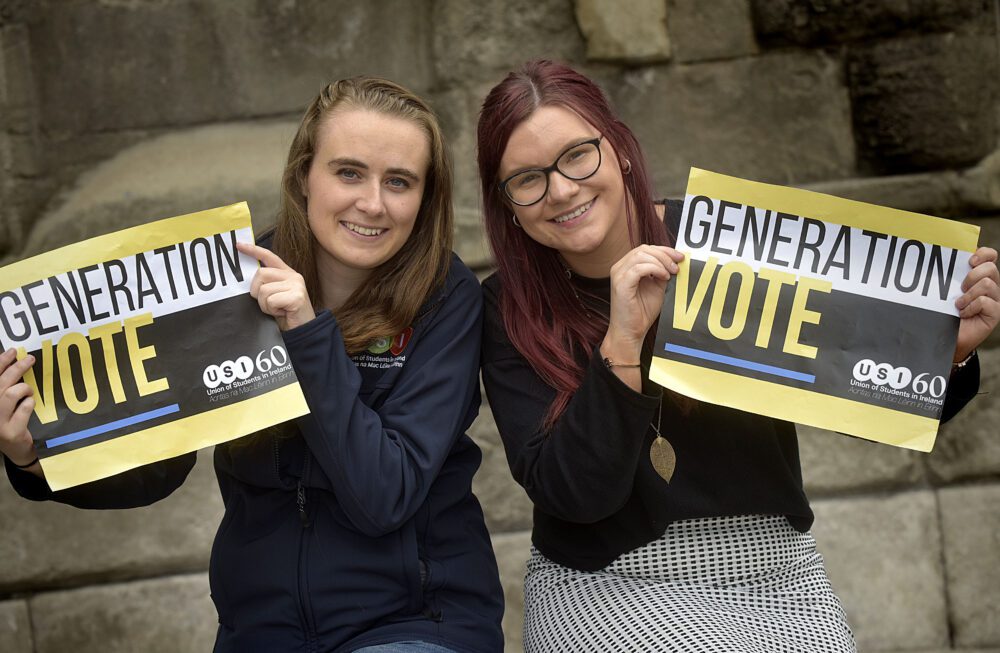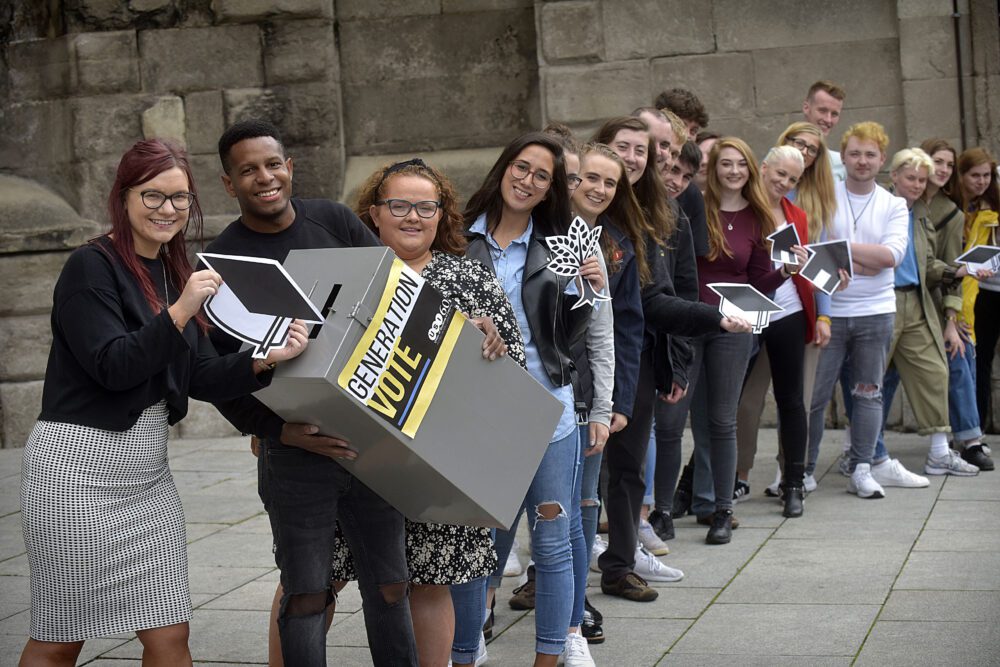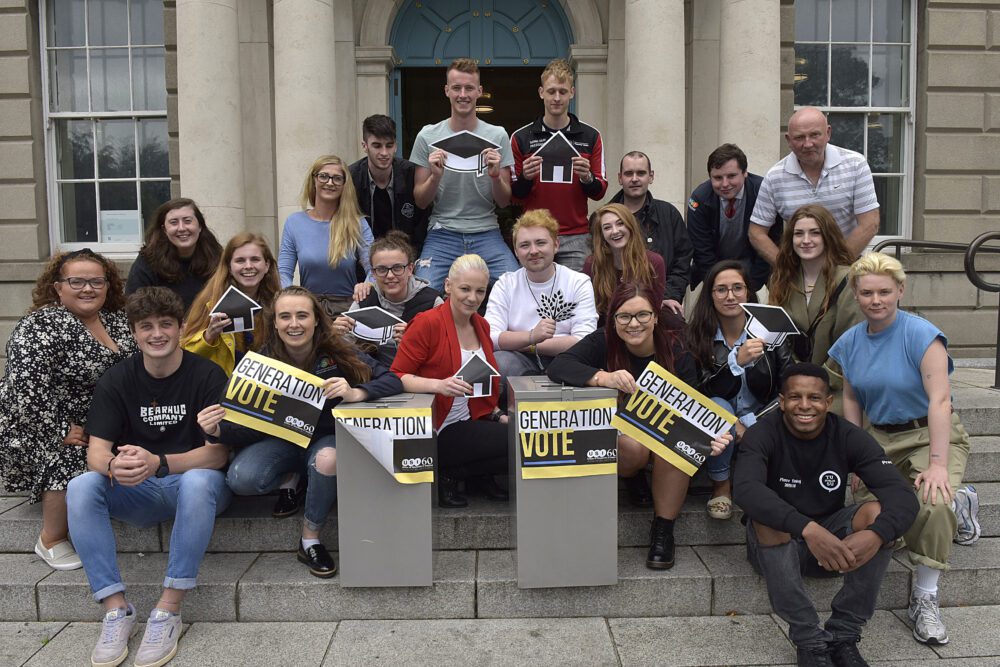

Register to Vote:
- If you are unsure if you are already registered to vote already, check on www.checktheregister.ie
- Collect forms/return forms to your Students’ Union, they will post it to your local County Council for you
- If you are on placement or not near your SU, you can download the RFA form HERE
The three different stages of voter registration, made simple:
- Anytime up until 1st November, students fill out the short RFA form and get onto the draft register, which will become the live register in February.
- Between November 1st and 25th, people can still get on the draft register, it’s just a slightly longer form (the RFA1) and it’s called making a claim to the register. This all becomes the live register in February.
- When an election is called, you register via the supplementary register, and can get on this anytime up until 15 days before the election. Students can fill out the RFA2 form, which needs to be stamped by the Gardaí, to get on the supplementary register.
Keepin’ it simple
|
Time of the Year |
Before Nov 1st |
Nov 1st-Nov 25th |
Up until 15 days before an election |
To change address (anytime) |
|
Form used |
RFA |
RFA1 |
RFA2 |
RFA3 |
You will find all of these forms either in your Students’ Union or online, here
Registering to vote in Dublin:
As of this year, people in Dublin can register to vote online if they have a my gov ID (Public services card). They can do this through https://www.voter.ie/
In Dublin, you will need to sort based on constituency.
Dublin county has 3 county councils and 1 City Council –
- South Dublin County Council
- Dun Laoghaire-Rathdown County Council
- Fingal County Council
- Dublin City Council
For Dublin addresses, use your eircode to find the correct council.


Frequently Asked Questions
- How do you check if you are registered to vote?
You can check by logging on to www.checktheregister.ie and submitting your details, or if you are on the supplemental register by calling your local county council. Calling your local county council is the best way as the online version is not always up to date.
- What if a referendum is called for October?
It’s quite likely that a referendum on the diaspora or voting at 16 could be called for October. In this case, you cannot register with the RFA or RFA1 form, it has to be the RFA 2 (the one stamped by a Garda).
- What is the “Draft Register of Electors”?
- At the end of October, councils compile the list of those who are already registered and those who have applied to register into what is called the ‘Draft Register of Electors’.
- The draft register becomes the real official register on the 15th of February 2019.
- The draft register is revised between 1st-25th November 2019 ie. people can still register, it just takes the council administratively longer.
4. When should you have forms sent to councils by?
Ideally, you should send out your form as soon as possible, by make sure you have sent your registration from in to your County Council few days before the deadline (so the 28th October for the RFAs, and the 22nd November for the RFA1s)
5. Will registering to vote using an RFA or RFA1 form allow you to vote this year?
No. Registering to vote using an RFA form will allow you to vote in anything that comes up after 15th of February 2020. (e.g. if there is a General Election called next spring)
6. If you register now, to ensure you are on the future register of electors for 2019/20, can you still fill in an RFA2 stamped by a guard to vote in any elections or referendums this year?
Yes, provided you fill in the form correctly, get it witnessed and stamped by a member of An Garda Síochána and send it to your county council offices before the deadline for the supplement to the register of electors for an election or referendum.
7. Can you register to vote before you’re 18?
Yes. Persons aged 18 years or over before and on 15th February 2020 and ordinarily resident in the Constituency on 1st September 2019, are entitled to be included on the Register.
8. [About the form]: What about the other ‘household members’?
- Write down the others you know in the house who are over 18.
- If county councils want to clarify any of the details, they can ring or email the student on the contact details given at the bottom of the form.
9. Who can vote in what?
- To be eligible to vote, you must also have been ordinarily resident in the State on 1 September in the year before the Register comes into force.
- While you may be entitled to register as a voter due to your residency, there may be a limit on the types of elections in which you can vote. The registration authority will need to know your citizenship because this will determine the elections at which you may vote.
The right to vote is as follows:
- Irish citizens may vote at every election and referendum;
- Other European Union (EU) citizens may vote at European and local elections.
- Non-EU citizens may vote at local elections only.
10. [About the Form] What is the ‘edited register’, and what happens if i tick the ‘opt out’ box?
- The full register lists everyone who is entitled to vote and can only be used for an electoral or other statutory purposes.
- The edited register can be used for a purpose other than an electoral or other statutory purpose e.g. for direct marketing use by a commercial or other organisation.
- If you don’t wish to be contacted in this way, tick the “OUT” box.
11. [About the Form]: Should I use my home address or my student accommodation address?
- We would encourage in so far as possible for people to use their home addresses, as once you are registered at that address, for any corrections you would have to fill out a change of address form (RFA3)
- If you are in temporary or rented accommodation for a period of a year or less, you may not be at the same address next year so it’s better to put down the home address that is your more-permanent location.
12. [About the Form] What if I don’t know my eircode?
- It’s best if you know it, so use https://finder.eircode.ie/#/ to find it!
Handy resources:
